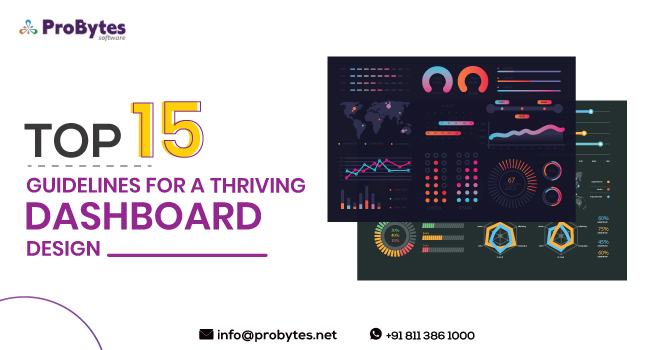Blog Category(283 Blogs)
Website Architecture Design- A Complete Guide
Have you seen buildings being constructed? The first step of constructing a building is creating a blueprint of the building design and structure. A similar logic can be applied when it comes to building a website. The architecture defines the layout of the website that acts as the foundation on which the entire website is built.
In this blog, we will delve into detail about the website architecture design, how architecture differs from the design and the various processes involved in website architecture designing.
What is website architecture design?

According to Techopedia, “Website architecture is used in creating a logical layout of a website in line with the user and/or business requirements.” A website architect while creating the website architecture design defines the various components of the website, describes the relationship between the components, and connects the components with the services delivered by the website.
Read Also: 7 Web Development Strategies To Take Your Business To The Next Level
The components of website architecture are:
- Interaction design
- User interface design
- Usability
- Web design
- Graphic design
- Content strategy
What is the need for website architecture?
Imagine you need to visit an office in a new city. Can you reach your destination if there are no directions or landmarks to guide you? That will be a very difficult task. So, you need a map, signposts or a guideline that will help you reach your destination.

The website architecture design works in a similar manner. It helps users find the products or services that they are looking for and make navigation to the right page seamless and straightforward.
A market study by Hubspot has found that 55% of website visitors don’t spend more than 15 seconds on the website.
This means that you have less than 15 seconds to give the information that your visitor is looking for. It is possible only if the website navigation is effective. This, in turn, can happen only if the website architecture design is robust and effective.
How is website architecture different from website design?
Though website design and website architecture are used interchangeably or as a composite term, there are a few basic differences between the two. Both design and architecture have similar goals and are presented in almost a similar manner.
Both website design and architecture revolve around the look and feel of the website. The various steps involved in the designing process are strategizing, storyboard creation, graphic designing, layouts, effects, components, and user experience.
On the other hand, website architecture deals more with user interface, usability, and user experience.
While the design focuses on technical aspects of the front of the website, architecture concentrates on the concept of the website and how it relates to the business goals.
Conceptually, both the processes are similar. Website architecture is about strategizing the website creation process and its presentation, which forms the basis for the website design.
The Process of Building Website Architecture
The process of creating the website architecture design involves the following steps:
1.Understanding the Requirements

The first step is to understand the business goals, the purpose of the website, audience, and all the other details that are essential to create the architecture.
In this step, the website architects also find out about the expected outcomes of the project and the evaluation criteria. It is also a good idea to do a comprehensive brainstorming with the client to cover as many details and specifics as possible.
2.Determine the Target Audience
Read Also: Web Development Vs Web Design – Want To Know The Difference?
The next factor that is considered before creating the architecture is the audience or the end user. The website architect needs to have a clear idea of the target audience so as to create the layout, usability, and user experience accordingly.
Information regarding the target audience can be gathered via demographics, psychological characteristics, need characteristics, geographic location, and user personas.
3.Competitor Analysis
After the basic details are obtained, the architect studies the direct and indirect competitors. This research will give an idea on the concepts to focus on and things that the target audience expects.
4.Defining User Goals
In order to define the user goals, we need to first identify the user problems and possible and probable solutions. While identifying the solutions, the architect thinks from the perspective of the target audience.
5.Scenario Mapping
Now that all the basic research and analysis is completed and all the required data is collected, scenario mapping needs to be done. Scenario mapping is a process that is used to reveal possible user flows.
It creates numerous scenarios that could occur while a user navigates the website. These scenarios are created based on the user goals that were defined in the previous step.
6.Mind Mapping
Till now, all that the architect had is a whole suite of ideas and information. Now all that has to be collated to form is a cohesive picture. This can be done by Mind Mapping. It is a design conceptualizing tool that can be used to create a logical outline of all the available information and ideas.

Some architects use Mind Mapping tools to create the outline while others go for the traditional pen-and-paper or whiteboard method. After Mind Mapping, the architect will have a clear idea of the categories, subcategories, and interconnections on the website.
7.Information Architecture
The information architecture is basically a foundation for the prototype of the website. A part of the interaction design, information architecture can be defined as the wireframe on which the entire product is built.
While talking about the need for a website architecture design, we spoke about how signposts or a map helps you find your destination in a new city.
In website building, the placement of the sign posts and navigation element is determined in the information architecture. Business goals, user needs, user experience, and all kinds of content are taken into consideration while creating information architecture.
Components such as documents, text, media files, headings and subheadings, and URLs are considered while creating the website’s information architecture.
8.Building the Wireframe or Prototype
Now that the information architecture and Mind Map are ready, the next step is to build the wireframe or prototype. All architects may not work on the Home Page prototype first.
The web page to prototype first depends on the kind of website and the deliverables. Typically, the landing page that will attract the target audience is prototyped first. While building the prototype, the header section is created first.
It usually contains the company logo and contact details, primary navigation menu, and search form. Next, the contextual areas and the footer are designed.
9.Testing
Read Also: 13 Frequently Asked Questions On Python Web Development
Once the prototype is created, it needs to be tested for bugs, errors, and usability.
First, the prototype is compared with the Scenario map to check if all the possible scenarios are covered and if there are any gaps in the navigation. Next, the usability of the architecture is tested using tools to ensure it meets the business goals.
10.Project Specification
It is the document that the website designers and developers need to follow to create the website. The project specification is created after the prototype is positively tested and approved by the client.
This document will contain detailed specifications about each webpage prototype, navigation, software required, technologies needed, user flow, and other information that designers and developers need to build the website.

Probytes is a website development company based in India that offers a wide range of website designing and development services. Our team of experienced architects, developers, and designers can build a website customized for your business goals and target audience. Contact us to know more about our services.

 Python
Python Magento
Magento Odoo
Odoo How To
How To How Much
How Much Yii Development
Yii Development Core PHP
Core PHP Prestashop
Prestashop Latest News
Latest News Education
Education Web Design
Web Design Business
Business Ecommerce
Ecommerce Travel
Travel Banking and Finance
Banking and Finance Web Development
Web Development Ruby On Rails
Ruby On Rails Joomla Development
Joomla Development Ecommerce
Ecommerce Magento Development Services
Magento Development Services Hire a Developer
Hire a Developer Web Crawling Services
Web Crawling Services











